Frederick II of Denmark
Frederick II (1 July 1534 – 4 April 1588) was King of Denmark and Norway and Duke of Schleswig from 1559 until his death.[1]
| Frederick II | |
|---|---|
 Portrait by Hans Knieper or Melchior Lorck, 1581. | |
| King of Denmark and Norway (more...) | |
| Reign | 1 January 1559 – 4 April 1588 |
| Coronation | 20 August 1559 Copenhagen Cathedral |
| Predecessor | Christian III |
| Successor | Christian IV |
| Born | 1 July 1534 Haderslevhus Castle, Haderslev, Denmark |
| Died | 4 April 1588 (aged 53) Antvorskov Castle, Zealand, Denmark |
| Burial | Roskilde Cathedral, Zealand, Denmark |
| Spouse | |
| Issue Detail | Elizabeth, Duchess of Brunswick-Lüneburg Anne, Queen of England and Scotland Christian IV, King of Denmark and Norway Ulrik, Prince-Bishop of Schwerin Augusta, Duchess of Holstein-Gottorp Hedwig, Electress of Saxony John, Prince of Schleswig-Holstein |
| House | Oldenburg |
| Father | Christian III of Denmark |
| Mother | Dorothea of Saxe-Lauenburg |
| Religion | Lutheran |
A member of the House of Oldenburg, Frederick began his personal rule in Denmark at the age of 24. He inherited a capable and strong kingdom, formed in large by his father after the civil war known as the Count's feud, after which Denmark saw a period of economic recovery and of a great increase in the centralised authority of the Crown.[2]
Frederick was, especially in his youth and unlike his father, belligerent and adversarial, aroused by honor and national pride,[3] and so he began his reign auspiciously with a campaign under the aged Johan Rantzau, which reconquered Dithmarschen. However, after miscalculating the cost of the Northern Seven Years' War, he pursued a more prudent foreign policy.[4] The remainder of Frederick II's reign was a period of tranquillity,[5] in which king and nobles prospered, and were Frederick instead focused more on hunting and feasting with his councillers as well as architecture and science.[6] The period saw a great number of architectural constructions, including the royal castles of Kronborg at Elsinore and Frederikborg Castle at Hillerød.[7]
Frederick has to a great extent been overshadowed by his popular, long-reigning son Christian IV,[8] and often been portrayed with sceptism and resent, resulting in the prevailing portrait of Frederick as a man and as king: an unlettered, inebriated, brutish sot.[9][10]
This portrayal is, however, inequitable and inaccurate, and recent studies[note 1][11] reappraise and acknowledge him as highly intelligent; he craved the company of learned men, and in the correspondence and legislation he dictated to his secretaries he showed himself to be quick-witted and articulate.[12] Frederick was also open and loyal, and had a knack for establishing close personal bonds with fellow princes and with those who served him.[9][13]
Early years and education
Frederick was born on 1 July 1534 at Haderslevhus Castle, the son of Duke Christian of Schleswig and Holstein (later King Christian III of Denmark and Norway) and Dorothea of Saxe-Lauenburg, the daughter of Magnus I, Duke of Saxe-Lauenburg.[14] His mother was the sister of Catherine, the first wife of Gustav Vasa and the mother of Eric XIV, his future rival.[8]
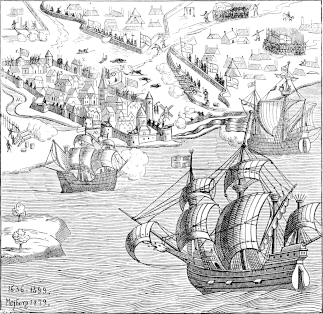
At the time of Frederick's birth, a civil war of Denmark was coming to an end (just three days after Frederick's birth his father Christian became King of Denmark). The previous king, Frederick I, died on 10 April the year before, but the Danish Council of the Realm, which traditionally ruled the kingdom with the king, had not chosen a successor, and now Denmark had, for more than a year, functioned as an Aristocratic Republic.[13] The father of the newborn Frederik, Christian, although eldest son of the late king, was not automatically King of Denmark, as the kingship in Denmark was not hereditary, but elective. Noblemen of the Council of the Realm could choose to pick another member of the royal family as king if they so decided.
Frederick I and his son Christian were staunch Protestants and adherents to the Lutheran cause, however, in the Council of the Realm, which consisted of many Catholic bishops as well as a number of powerful noblemen from the old nobility, there were a majority to support the established Catholic Church. After a period of interregnum and after subsequent risings in favour of the former King Christian II, a period known as the Count's Feud, Christian III finally became victorious, and was proclaimed King of a new Protestant Denmark.[15]
Proclaimed heir apparent
After King Christian III's victory in The Count's Feud, royal power had now returned to Denmark, and in such a way that the king could set his own terms.[16] In his haandfæstning, a document which all former Danish Kings must sign, and which regulates the relationship between king and nobility, he reduced the nobility's power, and established that the first son of the king should always be seen as heir apparent, and succeed his father automatically.[17]
On 30 October 1536 Christian convened the estates of the realm (Rigsdag) to Copenhagen, were they formally proclaimed Frederick heir apparent and successor to the throne, granting him the title "Prince of Denmark".[17] In 1542, the Prince travelled around Denmark and was hailed by the people. In the Midsummer of 1548 Christian III and his son Frederick, in a fleet of 7 ships and together with 30 Danish nobles, sailed for Oslo, were Frederick was hailed as heir apparent.[18] The royal reception included Danish nobles holding fiefs in Norway, received by Prince Frederik on his ship. The entire Norwegian nobility had been summoned to Oslo.[19]
Upbringing
While Christian III secured control of Denmark, his and Dorothea's children grew up in the bosom of the family. In addition to Anna, who was born in 1532, and Frederik from 1534, the group of siblings consisted of Magnus, born 1540, and John, who was born in 1545 and called John the Younger, to distinguish him from Christian III's half-brother, John the Elder. Youngest was a girl who was born in 1546 and named after her mother.[16]
It was the usual pedagogical view of the time that parents were so inclined to spoil their own children that the upbringing of the children should be delegated to other members of the family,[20] typically the child's maternal grandparents. But Queen Dorothea didn't want to send the children away when in infancy. Moreover, her own mother was suspected of nurturing Catholic sympathies, and in the religious era, a Lutheran Danish king could not in good conscience expose his child to Catholic influences. Another contributing factor has probably been the royal couple's concern by leaving the children too much out of sight in the tense political situation that prevailed in the first ten years of Frederik's life.[20]
Education
Frederik's education, although profound and thorough, was focused on the ecclesiastical and lutheran doctrine, Frederick mainly learning instructions in theology.[21] While a princely educational program, which included learning the art of stewardship, diplomacy and war, was proposed and planned by the Danish Chancellor, it was not executed in full as the Danish Chancellor's relationship with Christian III deteriorated before the education could begin.[22]
Life at the court of Christian III and Dorothea was imbued with a fervent Lutheran Christianity with which all their children naturally grew up. In March 1538 Chancellor Wolfgang von Utenhof proposed an educational program for the young Prince Frederick. He was to have a Danish court steward, but he also had to work with and be inspected daily by a chamberlain, who was to be a reliable and sobering man from the Holstein nobility. The prince had to learn Latin, German, Danish, French and other languages, and when he got older he had to learn fencing and other chivalry exercises. He was to have 10–15 young men for company both in his studies and in his chivalrous exercises.[22]
To which extent this educational program was followed is not known. In 1541, Frederick aged 7, he began his schooling. Frederick was appointed Hans Svenning, a reputed Danish humanist and professor of rhetoric at University of Copenhagen, as teacher.[22]
Dyslexia
Christian III and Dorothea has probably been expecting a lot from Frederick's schooling.[23] The son was obviously bright and had a good memory. So much bigger has the disappointment, and the amazement, been when the teaching started. Frederick learned to write beautiful and clear letters, but when it came to reading and spelling, the royal student was "a disaster".[23]
For Hans Svaning, this deranged spelling of Frederick's could only be seen as sloppy and laziness, given that the royal boy otherwise seemed smart enough.[24] Time and time again, Frederick has been punished, probably not only by the teacher, but also by his strict mother, who would gladly step in if Svaning's teaching was not sufficient.[24]
Because of Frederick's heavy dyslexia, he was perceived by his contemporaries as unlettered and illiterate. Both Frederick's father and mother looked with scepticism at the heir to the throne, and they kept him under the watchful eye of knowledgeable men as far as possible to prevent him from publicly speaking out. Neither did his father entrust Frederik with any administrative duties.[23]
Malmøhus

It was only at the age of 20 in 1554 that Frederik was allowed to hold his own court at Malmö Castle in Scania, but under the supervision of the middle-aged lensman ('Fief-man') Ejler Hardenberg, who was appointed the prince's court master. At the same time, political training began, which was put in the hands of the two driven noblemen Eiler Rønnow and Erik Rosenkrantz.[25] The years in Scania, must have felt like a liberation for Frederick.[24] He had finally escaped from the royal court with its tightly regulated existences and pious daily lives. Just outside the moats around Malmö Castle was the lively trading town of Malmö, which offered a young man all-out experiences.[25]
While spending many of his youth years in Scania, he became known as the "Prince of Scania" (princeps Scaniæ) (Danish: Fyrste af Skåne).[26] It is not known whether this title was ever officially decreed to him.[26]
Travels to Germany with his brother-in-law
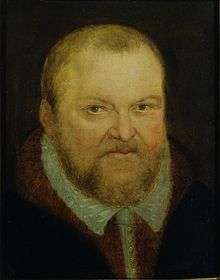
The only political education that Frederik received came from his close friendship with his brother-in-law, Elector Augustus of Saxony (reigned 1553–86). Some authors have later stated that Augustus was "the only strong emotional support" Frederick received in his youth.[21]
Augustus, who was the husband of Frederik's elder sister Anne, took Frederik under his wing, chaperoning him on a trip throughot the Holy Roman Empire in 1557–58. Here Frederik made the acquaintance of the new emperor, Ferdinand I (reigned 1558–64) at his coronation, his son and heir apparent Maximilian (emperor 1564–76), William of Orange, and a host of other more prominent German Protestant princes. The experience nurtured in Frederik a lasting appreciation of the great complexity of German politics and a taste for all things military.[21]
This was most troubling to Frederick's father, the ageing Christian III, who feared that in the Empire Frederick would develop ambitions that would exceed both his abilities and the resources of his kingdom, and that the trip would ultimately drag Denmark into the maelstrom of German princely politics.[26]
Reign
Proclaimed King
Frederick's father Christian III died on 1 January 1559 at Koldinghus. Frederick was not present at his father's bedside when he died, a circumstance that did not endear the new king, now King Frederick II of Denmark, to the councillors who had grown to appreciate and revere Christian.[9]
On 12 August 1559 Frederick signed his haandfæstning (lit. "Handbinding" viz. curtailment of the monarch's power, a Danish parallel to the Magna Carta) and on 20 August 1559 Frederick II was crowned at the Church of Our Lady in Copenhagen[27] by the Danish superintendent and ordinator of the anointing, Nicolaus Palladius and Jens Skielderup a Norwegian superintendent assisting, symbolizing the relationship between Denmark and Norway.[28] Week-long and elaborate celebrations is said to have taken place after the coronation.[9]
Conquest of Ditmarschen
Within weeks of Christian's passing, Frederick joined with his uncles in Holstein, John and Adolf, in a military campaign to conquer the Ditmarschen, under Johan Rantzau. Frederik II's great-uncle, King John, had failed to subjugate the peasant republic in 1500, but the Frederick's 1559-campaign was a quick and relatively painless victory for the Danish Kingdom. The brevity and low cost of the campaign were cold comforts to the members of the Council of the Realm, Johan Friis in particular. Friis had warned Frederick that a very real threat of conflict with Sweden loomed just over the horizon, but the king had not listened, and had not even consulted with the Council about the Ditmarschen.[29]
Early relationship with the Council of the Realm
The adversarial king–Council relationship improved relatively quickly however, and not because Frederik caved in to conciliar opposition. Rather, the two parties quickly learned to work together because their interests, and the Kingdom's, required that they did so. From an early time, the council invested much power in Frederick, as they had no desire to go back to the destructive near-anarchy of the pre-civil war years.[30]
Frederik would soon learn how to play the constitutional game, that is required in a consensual monarchy, such as Denmark; namely to humour the Council without sacrificing his own royal interests. This meant showing generosity to the conciliar aristocracy through various gifts and concessions, which he did in grand style. Shortly before the signing of his coronation charter (haandfæstning), Andreas von Barby, leader of the German Chancery, died. Barby was not well liked in the Council of the Realm, but he was extreamly wealthy.[31] The extensive fiefs in his possession reverted to the Crown, and Frederik was careful to distribute out these properties among the leading members of the Council of the Realm. Throughout his reign, Frederik would reward his conciliar aristocracy generously. Fiefs were distributed on highly favourable terms.[32]
The substantially warmer relationship between king and Council of the Realm after the Ditmarschen campaign is best illustrated by the Danish central administration's performance in the greatest national crisis of the reign, the Northern Seven Years' War (1563–70) against Sweden.
Relationship with Lovonia
From his predecessor, Frederick inherited the Livonian War. In 1560, he installed his younger brother, Magnus of Holstein (1540–1583), in the Bishopric of Ösel–Wiek. King Frederick II largely tried to avoid conflict in Livonia and consolidated amicable relations with Tsar Ivan IV of Russia in the 1562 Treaty of Mozhaysk.[33] His brother Magnus was later made titular King of Livonia, as a vassal of Tsar Ivan IV.
Northern Seven Years' War
King Frederick's competition with Sweden for supremacy in the Baltic broke out into open warfare in 1563, the start of the Northern Seven Years' War, the dominating conflict of his rule.[34]
The leading councillors, Johan Friis foremost among them, had feared a Swedish onslaught for several years, and after the succession of Frederick II's first cousin, the ambitious and unbalanced Eric XIV (reigned 1560–8) to the Vasa throne a confrontation appeared inevitable. Still, few councillors wanted war, and they preferred to wait until it was forced upon them, while Frederik preferred a preemptive strike. Despite its initial opposition to the war, the Council of the Realm went along with the king. Frederik II, wisely, made no effort to exclude the council from the direction of the war, and though he retained chief operational control he entrusted much responsibility to his councillors, including Holger Ottesen Rosenkrants, Marshal Otte Krumpen, and Admiral Herluf Trolle.[35]

Only one constitutional crisis emerged during the war; in late 1569, after six years of war, the Council decided not to provide the king with further grants of taxation. The war had been costly, both in lives and in gold, but since 1565 Denmark had made no appreciable gains. The council had already asked Frederik to make peace, and he had made a half-hearted attempt to do so in 1568, but neither Frederik nor his Swedish opponent was willing to concede defeat.[36]
The war developed into an extremely expensive war of attrition in which the areas of Scania were ravaged by the Swedes, and Norway was almost lost. During this war, King Frederick II led his army personally on the battlefield, but although with some small succeses, overall without much result.
The council, in cutting off financial support, had hoped to coerce the king into ending the war. Frederik felt betrayed, and after some reflection, Frederick felt that the only honourable recourse was abdication.[36] With his letter of resignation in the hands of the councillors, he left the capital to go hunting in the countryside. The king, still unmarried, had no heir, and consequently the Council of the Realm had good reason to fear another leaderless interregnum and even another civil war. It played into the king's hands; the Council begging for his return to the throne and allowed him to summon a Diet to consider additional tax levies.[36]
The conflict damaged his relationship with his noble councillors; however, the later Sture murders of 24 May 1567 by the insane King Eric XIV in Sweden, eventually helped stabilize the situation in Denmark. After King John III of Sweden, King Eric's successor, refused to accept a peace favoring Denmark in the Treaties of Roskilde (1568), the ongoing war dragged on until it was ended by a status quo peace in the Treaty of Stettin (1570), that let Denmark save face but also show limits of Danish military power.[37]
Frederik II learned a great deal about kingship during the war with Sweden. He learned to include the Council of the Realm in most matters of policy, but he also learned that it was possible to manipulate the council, even to bend it to his own will, without humiliating it or undermining its authority.[35] He would later come to master this abbility and use it extensively.[35]
Later reign
During the eighteen remaining years of his reign, Frederik would come to drew extensively on the lessons he learned in the Northern Seven Years' War with Eric XIV of Sweden. In the peacetime years, he maintained a rather peripatetic court, moving from residence to residence throughout the Danish countryside, spending a fair share of his time in hunting. This allowed him the opportunity to meet members of the Council individually and informally, in their home regions. As was required of the Danish King, he did summon the Council of the Realm once annually to meet at the herredag, but most of his business with the council was done on a one-to-one basis.[38] This ensured a very close personal bond with each member of the council while minimizing the opportunity for the council to oppose him as a full body. Frederik's personable disposition also helped,[37] and so, too, did the informal nature of court life under Frederik II. The king hunted, feasted, and drank with his noble councillors and advisers, and even with visiting foreign dignitaries, treating them as his equal peers and companions rather than as political opponents or inferiors. The eighteenth-century chronicler Ludvig Holberg claimed that when dining at his court, Frederik would frequently announce that ‘the king is not at home’, which signalled to his guests that all court formalities were temporarily suspended, and that they could talk and joke as they pleased without restraint. The Danish court of Frederick II may have appeared to be unsophisticated to outside observers, but the openness and bawdiness of court life served Frederik's political purposes.[38]
Financial situation
The great cost of the Northern Seven Years' War, some 1.1 million rigsdaler, was recovered chiefly from higher taxation on both Danish and Norwegian farm properties.[39] After state finances collapsed in the aftermath of the war, King Frederick II called Peder Oxe home to address the kingdom's economy. The taking over of Danish administration and finances by the able councillor, provided a marked improvement for the national treasury. Councillors of experience, including Niels Kaas, Arild Huitfeldt, and Christoffer Valkendorff, took care of the domestic administration. Subsequently, government finances were put in order and Denmark's economy improved. One of the chief expedients of the improved state of affairs was the raising of the Sound Dues. Oxe, as lord treasurer, reduced the national debt considerably and redeemed portions of crown lands.[40][41][42]
Constructions in reign

After the Northern Seven Years' War a period of affluence and growth followed in Danish history. The greater financial liquidity of the crown and the king's decreased dependence on the Council for funding, while not meaning that Frederick was actively seeking to sidestep conciliar control,[39] it did allow him to be less frugal than his late father, Christian III, had been. Considerable funds were devoted to an expansion of the Danish fleet and of the facilities for its support, not merely for security purposes but also to aid Frederick's active endeavours to rid the Baltic Sea of pirates.[43] The increased revenues likewise enabled Frederik to undertake the construction of Denmark's first national road network, the so-called kongevej ('King's Road'), connecting the larger towns and the royal residences.[44]
The most visible area of expenditure, however, was the royal castels and the court itself. Frederick spent freely on the reconstruction of several royal residences and other cities:[45]
- Antvorskov (near Slagelse, Sjælland), was one of Frederick's favourite hunting-castles. He later died at Antvorskov.
- In 1567, King Frederick II founded Fredrikstad in Norway. Frederik II Upper Secondary School in Fredrikstad, one of the largest schools of its kind in Norway, is named after Frederick.[46]
- He also rebuilt Kronborg in Elsinore from a medieval fortress into a magnificent Renaissance castle, between 1574 and 1585.[47]
- In 1560 Frederick converted the North Sealand farm Hillerødsholm into a great Renaissance castle, Frederiksborg.[48]
- In 1561, Frederik II developed and fortified Skanderborg Castle with materials from Øm Abbey.
For all Frederick's egalitarian behaviour at his court, Frederick was acutely aware of his elevated status. Like most monarchs of his day, he sought to bolster his international reputation through a measure of ostentatious display, in his patronage of artists and musicians, as well as in the elaborate ceremonies staged for royal weddings and other public celebrations.
Kronborg and "The King's Sound"
Frederick II had claimed naval supremacy in 'the king's sound', as he called The Sound and, indeed, the whole expanse of waters lying between his Norwegian and Icelandic possessions. In 1583 he secured an agreement by which England made an annual payment for permission to sail there, and France later followed suit.[49]
He also tried to bring the Icelandic trade and fisheries into the hands of his own subjects instead of Englishmen and Germans and encouraged adventurers such as Magnus Heinason, to whom he gave a monopoly of trade with the Faeroes, a half-share in ships captured on unlawful passage to the White Sea, and backing for a bold but unsuccessful attempt to reach east Greenland.[50]
Relationship with the Church
The necessity of maintaining order within the church meant that royal interference into ecclesiastical affairs was unavoidable. There was no longer an archbishop within the hierarchy, so the king was the final authority in matters that could not be settled by the bishops alone. As his father, Christian III, put it, kings were the ‘father to the superintendents’.[51]
As protector of the church and therefore of the clergy, Frederick frequently intervened in disputes between clergy and laity, even when the issues involved were trivial ones.[51]
Frederik II, repeatedly came to the defence of new parish priests whose congregations tried to force them to marry their predecessors’ widows, and sometimes to protect preachers from the wrath of overbearing noblemen. Conversely, the king – and especially Frederik II – would see to it personally that unruly, incompetent, or disreputable priests lost their parishes, or he would pardon those who had been punished by their superintendents for minor infractions. Protecting and disciplining the clergy was, after all, part of the king's obligation to the state church.[52]
Frederik II was more active than his late father in extending his royal authority into areas that the 1537 Ordinance had protected from secular power.[53] Frederik consulted with members of the theological faculty at the University of Copenhagen—the so-called ‘most learned ones’ (højlærde)—but he did not shy away from making changes in the most minute liturgical matters. He stipulated the books that every parish priest should have in his library, set standardized times for worship services in the towns, and set minimal standards of competence for all preachers.[52]
Although Frederick interferred much in ecclesiastical affairs, Paul Douglas Lockhart pointed out, that Frederick "was not interested in dictating conscience", stating that "he wanted only to prevent useless religious disputes, disputes that could weaken the kingdom and leave it vulnerable to Catholic aggression".[54]
Book of Concord
A good testimony of Frederik's stubborn resistance to all religious controversy, can be found in his response to the late sixteenth-century Lutheran statement of faith, the Formula and Book of Concord.[55] The ‘Concord’, which was written by leading Saxon divines and sponsored by Frederik II's brother-in-law, Augustus, Elector of Saxony, was an attempt to promote unity among the German Lutheran princes. As a unifier, however, the Concord was an abject failure.[56]
August had recently purged his court of Calvinists and Philippists, and orthodox Lutherans like Jacob Andreae composed the document. The Concord was extremely orthodox.[57] Frederik II had already clashed with his old friend and companion Augustus over theological issues: in 1575, Augustus had complained profoundly about the Calvinist sentiments expounded by Niels Hemmingsen in the treatise Syntagma institutionum christianarum (1574). Though Frederik tried to defend Hemmingsen, who was his favourite divine, he also wanted to keep Augustus' friendship, and he therefor dismissed Hemmingsen – with honour – from his post at the University of Copenhagen in 1579. Frederik was not nearly so receptive to August's promotion of the Concord.[54]
Like many other contemporaries of his time, Frederick believed that the Book of Concord promoted discord, and not harmony. Ignoring Augustus's warnings that a Calvinist plot had taken root in Denmark's clergy, he banned the Concord from his lands in July 1580.[56] Possession of the book, or even discussion of its contents, would be punished severely.[55] The king burned his own personal copies, which were sent to him by his sister Anne, wife of Augustus. The Concord, he argued, contained "teachings which are foreign and alien to us and to our churches, [and which] could easily disrupt the unity which ... these kingdoms have hitherto maintained".[54]
Marriage Ordinance
Frederik II's ‘Marriage Ordinance’ of 1582, inspired by Niels Hemmingsen’s writings on the institution, allowed divorce for a wide range of reasons, including infidelity, impotence, leprosy, venereal disease, and outlawry.[57]
Areas of interest

Though often stated as a drunkard and unlettered; leaving state affairs to his councillers to go hunting in the countryside, this is incorrect, and Frederick was highly intelligent. He craved the company of learned men, who comprised his inner circle of intellectuals, and they had many interests.[58]
University of Copenhagen
Frederick was a great patron of the University of Copenhagen, were he introduced educational reforms in the 1570s and 1580s. Frederik increased the university's budget almost exponentially, expanding the size of its teaching staff and providing substantially higher salaries.[59] While demanding higher educational standards from the priesthood, Frederick and his advisers provided more support for impoverished students. One hundred students, selected by the faculty, received room and board free of fee from the crown, each for a period of five years. Four especially promising students would be awarded the stipendium regium, which paid all costs for study abroad so long as the recipient returned to Copenhagen to finish his doctorate.[59]
Medicine
The interests of Frederik II and his intellectual circle of wise men were more wide-ranging than that of his father's theological one. Frederik had a strong proclivity for Paracelsian medicine: in 1571 he appointed Johannes Pratensis to the medical faculty of the University of Copenhagen, and in the same year Petrus Severinus became his personal physician. Severinus wielded considerable influence among Paracelsian practitioners, following the publication of his Idea medicinæ philosophicæ (1571).[60]
Alchemy, astrology and Tycho Brahe
Frederik II's fascination with alchemy and astrology, common to contemporary sovereigns, sped the rise of the astronomer Tycho Brahe to international renown as a pioneer in Europe's ‘scientific revolution’. Tyge Brahe came from the highest ranks of the Danish ruling elite: his father, Otte Brahe til Knudstrup, was a fiefholder in Scania and a member of the Council of the Realm, as was Tyge's brother Axel Brahe.[58][61][62]
After an extensive education abroad, Tycho Brahe returned to Denmark not to pursue a career in state service as men of his blood typically did, but instead retreated to the monastery at Herrevad,[62] where he and his maternal uncle Sten Bille experimented with the manufacture of paper and glass and maintained a private observatory.[63] Brahe's treatise on the supernova that appeared in Cassiopeia in November 1572, published at the behest of the rigshofmester Peder Oxe, brought his activities to the attention of Frederik and his court.[64] At the king's insistence, Brahe took up a lectureship at the University of Copenhagen in 1574,[61] and two years later he was granted the island of Ven as his fief.[65] As a fiefholder, he turned out to be a minor disaster, but the observatory at his residence, Uraniborg, drew students from all over Europe. From 1576 until his expulsion by Christian IV in 1597, Brahe supervised the first publicly funded scientific research institute in European history.[64][65]
Character as patron of science
In his later life, Frederik was fiscally cautious in all matters of state, but he gave an abundance of royal support when it was directed towards the life of the mind. Even after he dismissed Hemmingsen from the University of Copenhagen in 1579, for example, he made sure that the theologian still had a gracious salary and the opportunity to study. Tycho Brahe received not only Ven as a ‘free fief’, but also several other fiefs, canonries, and farms in Scania to fund his work at Uraniborg.[59]
Frederik himself picked out the island of Ven as a place where Brahe could conduct his experiments without distraction. Perhaps the king was driven, in part, by a desire to enhance Denmark's reputation among the great nations of Europe, but even so he demonstrated a finely tuned appreciation for intellectual talent.[58]
As Frederick is alleged to have said to Brahe:[59]
I will sail over to the island [Hven] from time to time and see your work in astronomy and chemistry, and gladly support your investigations, not because I have any understanding of astronomical matters ... but because I am your king and you my subject ... . I see it as my duty to support and promote something like this
— Frederick II to Tycho Brahe
As Paul Douglas Lockhart later stated: "Frederik II may have been a near illiterate (...) but nonetheless he was enlightened as few monarchs of his generation were. It is difficult to see how Danish historians for so long laboured under the impression that he was little better than a drunken fool".[58]
Hunting, drinking and feasting
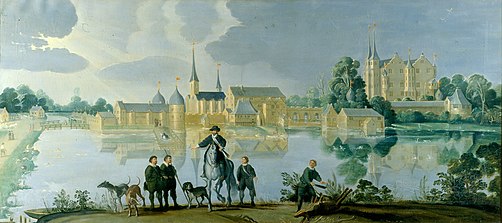
Frederick's areas of interest did not only comprise of theological and scientific ones. Frederick is known very well for his love of hunting, drinking and feasting.[12] In his youth and in the start of his reign this was a way for Frederick to get away from the Danish court and its formalities.[38] However, in Frederick's later reign he began using hunting and feasting as a political tool. In the peacetime years of his reign, Frederick would maintaine a peripatetic court, moving from residence to residence throughout the Danish countryside, spending a fair share of his time in hunting. This allowed him the opportunity to meet members of the Council individually and informally, in their own home regions. Most of his business with the Council of the Realm was therefor done on a one-to-one basis.[38] This ensured a very close personal bond with each member of the council while minimizing the opportunity for the council to oppose him as a body. Frederik's personable disposition undoubtedly helped.[59]
Informal nature of court life
The king hunted, feasted, and drank with his councillors and advisers, and even with visiting European foreign dignitaries, treating them as his peers and companions rather than as political opponents or inferiors. The eighteenth-century chronicler Ludvig Holberg claimed that when dining at the court of Frederick II, he would frequently announce that ‘the king is not at home’, which signalled to his guests that all court formalities were temporarily suspended, and that they could talk and joke as they pleased without restraint. The Danish court may have appeared unsophisticated to outside observers, but the openness and bawdiness of court life served Frederik's political purposes.[38]
Youth and marriage
Anne Hardenberg
As a young man, Frederick II had desired to marry the noblewoman, Anne Hardenberg, who had served as a lady-in-waiting to his mother, the Dowager Queen Dorothea of Denmark, however as she was not of princely birth, this was impossible.[66] There is no evidence that either of them had any interest in entering af morganatic marriage and Anne Hardenberg was married six months after Frederick, after which there is no known contact between them.
Possible matrimonies
Negotiations to find a suitable royal bride were manifold during the 1560s, but mostly it came to nothing, often because Frederick strongly insisted on meeting the prospective bride before committing to her.[67] The proposed matrimonies included:
- Renata of Lorraine: Throughout the 1550s, Frederick's father Christian III strongly advocated a marriage alliance with the House of Lorraine, hoping that a match between his son Prince Frederik and claimant to the Danish throne Christina of Denmark’s daughter Renata, would settle the claimant disputes, and possibly even add Lorraine to the Oldenburg patrimony.[68] The match never took place—Frederik was indifferent to it,[69] many of the king's advisers opposed it, and Christina was none too cooperative – but it remained Christian III's fervent hope to the end of his days.[69]
- Mary Stuart, Queen of Scots.[70]
- He had also wooed Queen Elizabeth I of England, but to no avail, and was later made a Knight of the Garter.[70]
- A daughter of Emperor Ferdinand I.[70]
- A daughter of Albert V, Duke of Bavaria.[70]
- Margaret of Pomerania: Frederick's aunt Elizabeth of Denmark, introduced Frederick to the 17-years-old Margaret of Pomerania, but Frederick was instead interested in Elizabeth's daughter Sophie.[70]
Marriage to Sophie of Mecklenburg-Güstrow
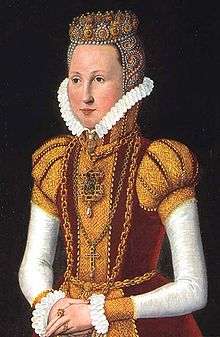
On 20 July 1572, he was married to Sophie of Mecklenburg-Güstrow, a descendant of King John of Denmark, and also his own first half-cousin, through their grandfather, Frederick I, King of Denmark and Norway.
Sophie was the daughter of Ulrich III, Duke of Mecklenburg-Güstrow and Elizabeth of Denmark. Their marriage was harmonious and happy. Sophie is consistently mentioned in Frederick's handwritten diary as "mynt Soffye", meaning "my Sophie" and she followed him through the country as the court was very mobile. Queen Sophie was a loving mother, nursing her children personally during their illnesses. When Frederick was sick with malaria in 1575, she personally nursed him and wrote many worried letters to her father about his progress.[71][72]
After Frederick's death Sophie was granted a 'Dowager-pension' (Danish: Livgeding), consisting of Nykøbing Castle and the islands of Lolland and Falster. The Dowager Queen Sophie managed her estates in Lolland-Falster so well that her son could borrow money from her on several occasions for his wars.[73]
Issue
Frederick and Sophie had seven children:
| Name | Portrait | Birth | Death | Notes |
|---|---|---|---|---|
| Elizabeth of Denmark | 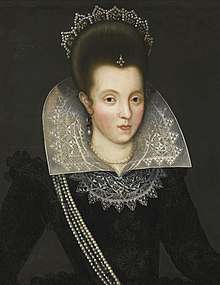 |
25 August 1573 | 19 June 1625 | She married on 19 April 1590 Henry Julius, Duke of Brunswick-Lüneburg. They had 10 children. |
| Anne of Denmark | 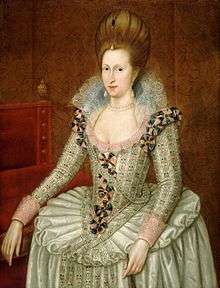 |
12 December 1574 | 2 March 1619 | She married on 23 November 1589 King James VI of Scotland (later also King James I of England). They had 7 children. |
| Christian IV, King of Denmark and Norway |  |
12 April 1577 | 28 February 1648 | He married firstly on 27 November 1597 Anne Catherine of Brandenburg. They had 7 children.
He married secondly, morganatically, Kirsten Munk. They had 12 children. Christian had at least 5 other illegitimate children. |
| Ulrik of Denmark | 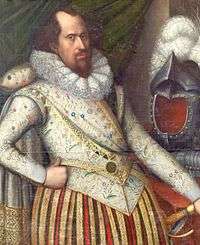 |
30 December 1578 | 27 March 1624 | He became last Bishop of the old Schleswig see (1602–1624),
He became Ulrich II as Administrator of the Prince-Bishopric of Schwerin (1603–1624). He married Lady Catherine Hahn-Hinrichshagen. |
| Augusta of Denmark | 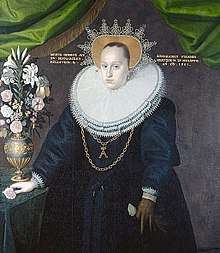 |
8 April 1580 | 5 February 1639 | She married on 30 August 1596 John Adolf, Duke of Holstein-Gottorp. They had 8 children. |
| Hedwig of Denmark | 5 August 1581 | 26 November 1641 | She married on 12 September 1602 Christian II, Elector of Saxony. The marriage was childless | |
| John of Denmark, Prince of Schleswig-Holstein |  |
9 July 1583 | 28 October 1602 | He was betrothed to Tsarevna Ksenia (Xenia) daughter of Boris Godunov, Tsar of Russia, but died before the marriage could take place. |
Death and burial

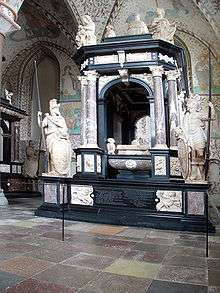
King Frederick II of Denmark died on 4 April 1588, aged 53, at Antvorskov. Frederik's passing was sudden and unexpected – recent historians speculate that his health deteriorated very rapidly as the result of lung cancer—and hence the central administration was unprepared.
The royal succession was not in doubt, for Frederik's marriage to Sophie of Mecklenburg-Güstrow had been most fruitful dynastically, producing seven children altogether. The Council had already hailed the eldest of Frederik's three sons, Duke Christian, as prince-elect in 1580.
Frederick was buried on 5 August 1588 in Christian I's chapel at Roskilde Cathedral, were his son King Christian IV of Denmark later build a large monument in honour of his late father.[74]
Legacy
Many recent historians, such as Poul Grinder-Hansen, Paul Douglas Lockhart, Thomas Kingston Derry and Frede P. Jensen have expressed, that it is difficult to see how the reign, and especially the later reign, of Frederik II could be viewed as anything other than a resounding success.[9][13] Frederick's character have throughout time been misinterpreted by Danish historians as unlettered, foolish and stupid; leaving state affairs to his councillors to go hunting in the countryside.[11]
However, this is incorrect, and Frederick was highly intelligent. He craved the company of learned men, who comprised his inner circle of intellectuals, and they had many interests, including medicine, alchemy, astrology and theology.[75] As Paul Douglas Lockhart later stated: "Frederik II may have been a near illiterate (...) but nonetheless he was enlightened as few monarchs of his generation were. It is difficult to see how Danish historians for so long laboured under the impression that he was little better than a drunken fool".[58]
Classical and more recent portrayal
The negative portrayal of Frederik II was founded by the cultural historian Troels Frederik Lund in his 1906 biography of Peder Oxe, who in his opinion saved Denmark on the brink of abyss against the foolhardy young king and his German war-mad officers.[11] This portrayal was continued by Erik Arup, he wrote:
He (Frederick II) was robust and brutal, so hotheaded and gross in his whole way that it was striking even for his contemporaries. His penchant for overestimating himself and underestimating everyone else was a profound feature of him that made him highly ungracious and unlovable
— Erik Arup
Often described as wilful and impatient, he was easily moved to anger, and by his early twenties had exhibited a weakness for strong drink and an addiction to the hunt. These are the traits upon which Danish historians have most often focused, resulting in the prevailing portrait of Frederik as a man and as king: an unlettered, inebriated, brutish sot, who virtually abdicated his responsibilities of king in favour of hunting and binge drinking.[9]
This portrayal is, however, unfair and inaccurate, and thanks to the research of Frede P. Jensen it has been redrawn. Frede P. Jensen (1940–2008), after thorough archival studies, was one of the first historians in Denmark who, in his works, radically changed the view of the King Frederick II.[76]
Frederik was indeed no great scholar, owing largely to the fact that he was very dyslexic. Throughout his entire life he would struggle with his difficulty in reading and writing, and it embarrassed him immensely. But he was, as those close to him would attest, highly intelligent; he craved the company of learned men, and in the correspondence and legislation he dictated to his secretaries he showed himself to be quick-witted and articulate. Frederik was also open and loyal, and had a knack for establishing close personal bonds with fellow princes and with those who served him. These qualities would make him an ideal politician. Indeed, Frederik would take the chief legacy of his father's kingship – the close symbiosis between king and aristocracy – to its logical limits, and simultaneously would bring Denmark to the height of its power and influence in European affairs.[9]
The rebirth of the University of Copenhagen and the professionalization of the central administration, coupled with the prominence of learned men within the king's inner circle, gave the court of Frederik II a uniquely refined and scholarly character that was lacking in his father's court. This, in turn, gave rise to increased intellectual activity throughout the realm. Literature, mostly theological, blossomed in the second half of the century.[76]
Title, style, honours and arms
Titles and styles
Coat of Arms
.svg.png) |
 |
|---|---|
| Coat of arms of Frederick as King of Denmark and Norway. | Coat of arms of Frederick as Knight of the Order of the Garter. |
Ancestry
| Ancestors of Frederick II of Denmark[77] | |||||||||||||||||||||||||||||||||||||||||||||||||||||||||||||||||||||||||||||||||||||||||||||||||||||||||||||||||||||||||||||||||||||||||||||||||||||||||||||||||||||||||||||||||||||||||||||||||||||||||||||||||||||||||||||||||||||||||||||||||||||||||||||||||||||||||||||||||||||||||
|---|---|---|---|---|---|---|---|---|---|---|---|---|---|---|---|---|---|---|---|---|---|---|---|---|---|---|---|---|---|---|---|---|---|---|---|---|---|---|---|---|---|---|---|---|---|---|---|---|---|---|---|---|---|---|---|---|---|---|---|---|---|---|---|---|---|---|---|---|---|---|---|---|---|---|---|---|---|---|---|---|---|---|---|---|---|---|---|---|---|---|---|---|---|---|---|---|---|---|---|---|---|---|---|---|---|---|---|---|---|---|---|---|---|---|---|---|---|---|---|---|---|---|---|---|---|---|---|---|---|---|---|---|---|---|---|---|---|---|---|---|---|---|---|---|---|---|---|---|---|---|---|---|---|---|---|---|---|---|---|---|---|---|---|---|---|---|---|---|---|---|---|---|---|---|---|---|---|---|---|---|---|---|---|---|---|---|---|---|---|---|---|---|---|---|---|---|---|---|---|---|---|---|---|---|---|---|---|---|---|---|---|---|---|---|---|---|---|---|---|---|---|---|---|---|---|---|---|---|---|---|---|---|---|---|---|---|---|---|---|---|---|---|---|---|---|---|---|---|---|---|---|---|---|---|---|---|---|---|---|---|---|---|---|---|---|---|---|---|---|---|---|---|---|---|---|---|---|---|---|---|---|
| |||||||||||||||||||||||||||||||||||||||||||||||||||||||||||||||||||||||||||||||||||||||||||||||||||||||||||||||||||||||||||||||||||||||||||||||||||||||||||||||||||||||||||||||||||||||||||||||||||||||||||||||||||||||||||||||||||||||||||||||||||||||||||||||||||||||||||||||||||||||||
Notes
- Thanks in large part to the research of historian Frede P. Jensen, who, after thorough archival studies, were able to provide a real and contemporary historical description of the King's character.
References
- Frederik 2 (Dansk Konge)
- Derry, T. K. (Thomas Kingston), page 89
- Danmarks Historien, Christoffersen Peder, Gyldendals Forlag, side 298
- "Kongerækken". Kongehuset (in Danish). 1 October 2011. Retrieved 23 July 2020.
- Derry, T. K. (Thomas Kingston), page 99
- Derry, T. K. (Thomas Kingston), page 98
- "Frederiksborg Slot". Frederiksborg (in Danish). Retrieved 23 July 2020.
- Chisholm, Hugh, ed. (1911). . Encyclopædia Britannica. 11 (11th ed.). Cambridge University Press.
- Lockhart, Paul D., page 36
- "Frederik II". www.roskildehistorie.dk. Retrieved 23 July 2020.
- Frandsen, Karl-Erik (2013). "Poul Grinder-Hansen: Frederik 2. Danmarks renæssancekonge". Tidsskrift.
- "Frederik 2., 1534–1588". danmarkshistorien.dk (in Danish). Retrieved 21 July 2020.
- Grinder-Hansen, Poul, section 3-page 1
- McNaughton, Arnold, 1930– (1973). The book of kings : a royal genealogy. London: Garnstone Press. p. 156. ISBN 0-900391-19-7. OCLC 2155441.CS1 maint: multiple names: authors list (link)
- Grinder-Hansen, Poul, section 3-page 2
- Lockhart, Paul D., page 28
- Grinder-Hansen, Poul, section 3-page 9
- "Frederick II | king of Denmark and Norway". Encyclopedia Britannica. Retrieved 22 July 2020.
- Larson, James L., author. Reforming the north : the kingdoms and churches of Scandinavia, 1520–1545. p. 435. ISBN 978-1-107-68945-9. OCLC 861358270.CS1 maint: multiple names: authors list (link)
- Grinder-Hansen, Poul, section 4-page 1
- Lockhart, Paul D., page 35
- Grinder-Hansen, Poul, section 4-page 2
- Grinder-Hansen, Poul, section 4-page 3
- Grinder-Hansen, Poul, section 4-page 4
- Grinder-Hansen, Poul, section 4-page 5
- Bricka, Carl Frederik. "289 (Dansk biografisk Lexikon / V. Bind. Faaborg – Gersdorff)". runeberg.org (in Danish). Retrieved 22 July 2020.
- Monrad Møller, Anders (2012). Enevældens kroninger. Syv salvinger – ceremoniellet, teksterne og musikken. Forlaget Falcon. p. 11. ISBN 978-87-88802-29-0.
- Bugge, Alexander, 1870–1929. (1916). Norges historie : fremstillet for det norske folk. Aschehoug. p. 123. OCLC 911156583.CS1 maint: multiple names: authors list (link)
- Bølling, Hans (1944–1945). Danmarks Konger: fra Christian I til Christian X. Nationaltidene. p. 14.
- Lockhart, Paul D., page 37
- DFH, i. 78–80; Colding, Studier, 68–77; Peder Enevoldsen, ‘Lensreformerne i Danmark 1557–96’, HTD, 81 (1981–82), 343–98
- Lockhart, Paul D., page 38
- "Magnus, Konge af Lifland, 1540–83". Dansk biografisk Lexikon. Retrieved 15 August 2016.
- "Frederik 2 – Udforsk slottet – Kronborg Slot – Slotte og haver – Kongelige Slotte". kongeligeslotte.dk. Retrieved 23 July 2020.
- Lockhart, Paul D., page 39
- Jensen, Frede P. (1982). Danmarks konflikt med Sverige 1563–1570. Den danske historiske forening. pp. 286–94. ISBN 87-87462-19-2. OCLC 185811858.
- "Frederik 2". Store norske leksikon. Retrieved 15 August 2016.
- Lockhart, Paul D., page 40
- Lockhart, Paul D., page 41
- "Christian III, Peder Oxe and the 1557 Meeting of the Great Council: Royal Purges and Succession". historisktidsskrift.dk. Retrieved 15 August 2016.
- "Oxe, Peder, 1520–75, Rigshofmester". Dansk biografisk Lexikon. Retrieved 15 August 2016.
- "Frederik 2 (Danish Kings and their History)". Archived from the original on 29 July 2010. Retrieved 10 May 2010.
- Grundtvig, Johann (1876). Frederik den Andens Statshusholdning. Copenhagen: C. A. Reitzel. pp. CLXXVI–CLXXVII.
- Wittendorff, Alex Verfasser (1973). Alvej og kongevej studier i samfaerdselsforhold og vejenes topografi i det 16. og 17. århundrede ; [mit engl. Zsfassung.]. Akad. Forl. pp. 164–207, 244–57. OCLC 1071371212.
- NORN, Otto Creemers. (1954). Kronborgs bastioner. En fortifikationshistorisk studie. [With plans.]. pp. 19–37. OCLC 562940392.
- Fredrikstad museum Archived 21 January 2008 at the Wayback Machine
- Frederik II (1559–1588) (Familien Sørensens Hjemmeside – og Rejseholdet)
- "Frederik 2". Frederiksborg (in Danish). Retrieved 23 July 2020.
- Derry, T. K. (Thomas Kingston), page 100
- Derry, T. K. (Thomas Kingston), page 102
- Lockhart, Paul D., page 66
- Lockhart, Paul D., page 67
- Derry, T. K. (Thomas Kingston), page 101
- Lockhart, Paul D., page 70
- Lockhart, Paul Douglas, 1963– (2004). Frederik II and the Protestant cause : Denmark's role in the Wars of Religion, 1559–1596. Leiden: Brill. p. 78. ISBN 90-04-13790-4. OCLC 53485232.CS1 maint: multiple names: authors list (link)
- Lockhart, Paul D., page 71
- Lockhart, Paul Douglas, 1963– (2004). Frederik II and the Protestant cause : Denmark's role in the Wars of Religion, 1559–1596. Leiden: Brill. p. 77. ISBN 90-04-13790-4. OCLC 53485232.CS1 maint: multiple names: authors list (link)
- Lockhart, Paul D., page 80
- Lockhart, Paul D., page 78
- Shackelford, Jole. (2004). A philosophical path for Paracelsian medicine : the ideas, intellectual context, and influence of Petrus Severinus (1540/2-1602). Copenhagen: Museum Tusculanum Press, University of Cophenhagen. ISBN 978-87-7289-817-9. OCLC 56966680.
- "Life and Times of Tycho Brahe". reformation.org. Retrieved 15 August 2016.
- "Jørgen (Thygesen) Brahe". Den Store Danske. Retrieved 15 August 2016.
- Christianson, John Robert. (2003). On Tycho's island : Tycho Brahe, science, and culture in the sixteenth century. Cambridge University Press. ISBN 0-521-00884-0. OCLC 899038154.
- West, Mary Lou (2001–2008). "On Tycho's Island: Tycho Brahe and His Assistants, 1570–1601 On Tycho's Island: Tycho Brahe and His Assistants, 1570–1601". Physics Today. 54 (8): 47–47. doi:10.1063/1.1404849. ISSN 0031-9228.CS1 maint: date format (link)
- Thoren, Victor E. Christianson, J. R. (John Robert) (1991). The Lord of Uraniborg : a Biography of Tycho Brahe. Cambridge University Press. ISBN 978-0-511-66541-7. OCLC 776969800.CS1 maint: multiple names: authors list (link)
- Anne Corfitzdatter Hardenberg of Helsingborg (Worldwide Guide to Women in Leadership)
- Grinder-Hansen, Poul. Frederik 2 – Danmarks Renæssancekonge. Gyldendal. p. 55. ISBN 9788702135695.
- Lockhart, Paul D., page 118
- Lockhart, Paul D., page 119
- Fabricius, A. (1914). Illustreret Danmarkshistorie for Folket. pp. 182–183. OCLC 873940782.
- Frederica, J.A. (1892). "Nogle Breve fra Frederik IIs Dronning Sofie til hendes Fader, hertug Ulrich af Meklenborg". Personalhistorisk Tidsskrift. Tredie Række: 1–8 – via Personalhistorisk Tidsskrift.
- Grinder-Hansen, Poul (2013). Frederik II – Danmarks Renæssancekonge. Gyldendal. pp. See Chapter 12, Kærlighed, chapter 24, Private notater. ISBN 978-87-02-13569-5.
- Dansk Kvindebiografisk Leksikon
- Bricka, Carl Frederik. "293 (Dansk biografisk Lexikon / V. Bind. Faaborg – Gersdorff)". runeberg.org (in Danish). p. 293. Retrieved 23 July 2020.
- Colding, Poul, 1896– (1939). Studier i Danmarks politiske historie i slutningen af Christian III.s og begyndelsen af Frederik III.s tid. Nyt nordisk forlag—Arnord Busck. OCLC 581614588.CS1 maint: multiple names: authors list (link)
- Lockhart, Paul D., page 79
- Neil D. Thompson and Charles M. Hansen, The Ancestry of Charles II, King of England (American Society of Genealogists, 2012).
Bibliography
- Lockhart, Paul Douglas 1963– (2011). Denmark, 1513–1660 : the rise and decline of a Renaissance monarchy. Oxford University Press. ISBN 978-0-19-927121-4. OCLC 844083309.
- Grinder-Hansen, Poul, 1956-. Frederik 2. : Danmarks renæssancekonge [Frederick II: Denmark's Renaissance King] (1. udgave, 1. oplag ed.). [Copenhagen]. ISBN 978-87-02-08108-4. OCLC 859151055.CS1 maint: multiple names: authors list (link)
- Derry, T. K. (Thomas Kingston), 1905-2001. (2008). A history of Scandinavia : Norway, Sweden, Denmark, Finland and Iceland. Minneapolis: University of Minnesota Press. ISBN 0-8166-3799-7. OCLC 757764817.CS1 maint: multiple names: authors list (link)
External links
| Wikimedia Commons has media related to Frederick II of Denmark. |
- The Royal Lineage at the website of the Danish Monarchy
- Frederick II at the website of the Royal Danish Collection
- Bain, Robert Nisbet (1911). . In Chisholm, Hugh (ed.). Encyclopædia Britannica (11th ed.). Cambridge University Press. pp. 50–51.
Frederick II Born: 1 July 1534 Died: 4 April 1588 | ||
| Regnal titles | ||
|---|---|---|
| Preceded by Christian III |
King of Denmark and Norway 1559–1588 |
Succeeded by Christian IV |
| Preceded by Christian III John II the Elder and Adolf (in condominial rule) |
Duke of Holstein and Schleswig 1559–1588 with John II (1559–1580) Adolf (1559–1586) Frederick II (1586–1587) Philip (1587–1588) |
Succeeded by Christian IV and Philip |
.png)
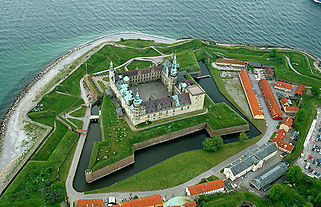
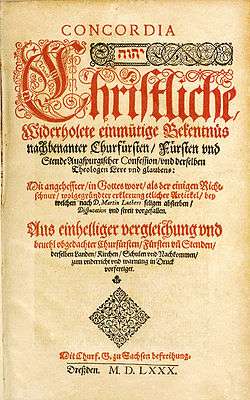
%2C_1588_-_1595.jpg)
_-_Google_Art_Project.jpg)

